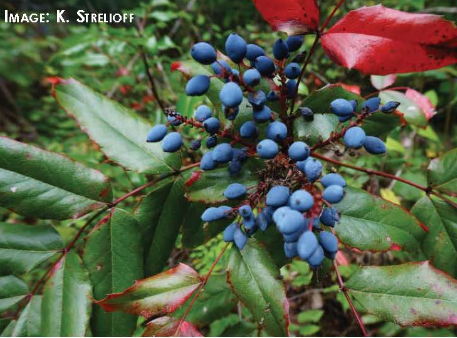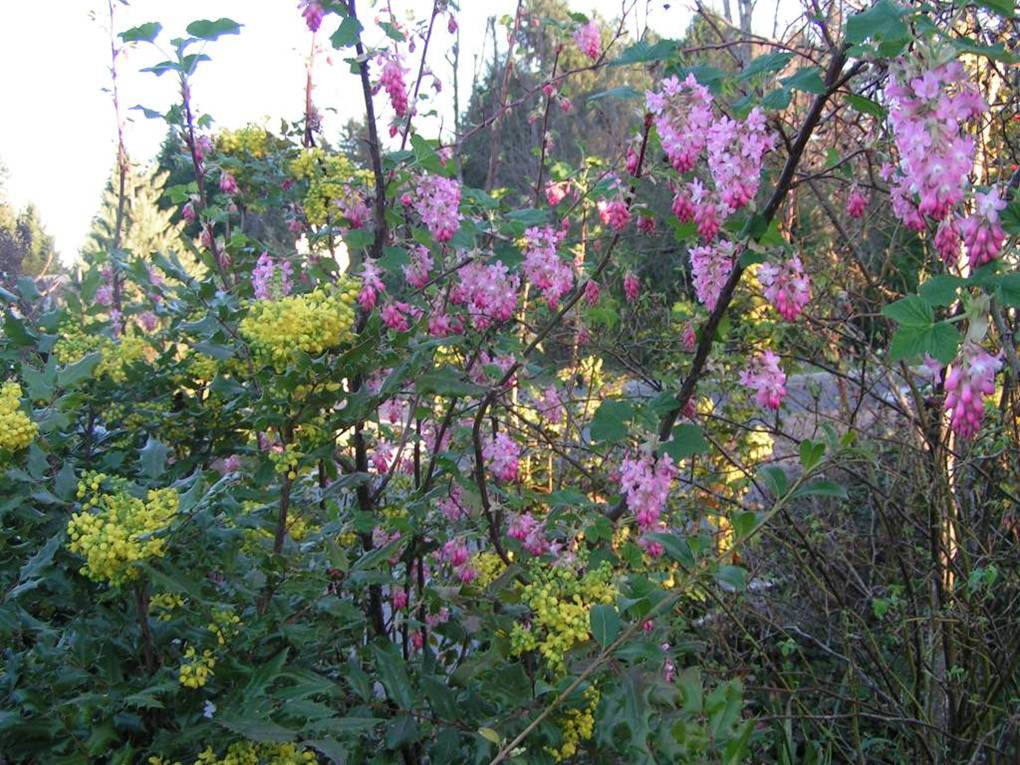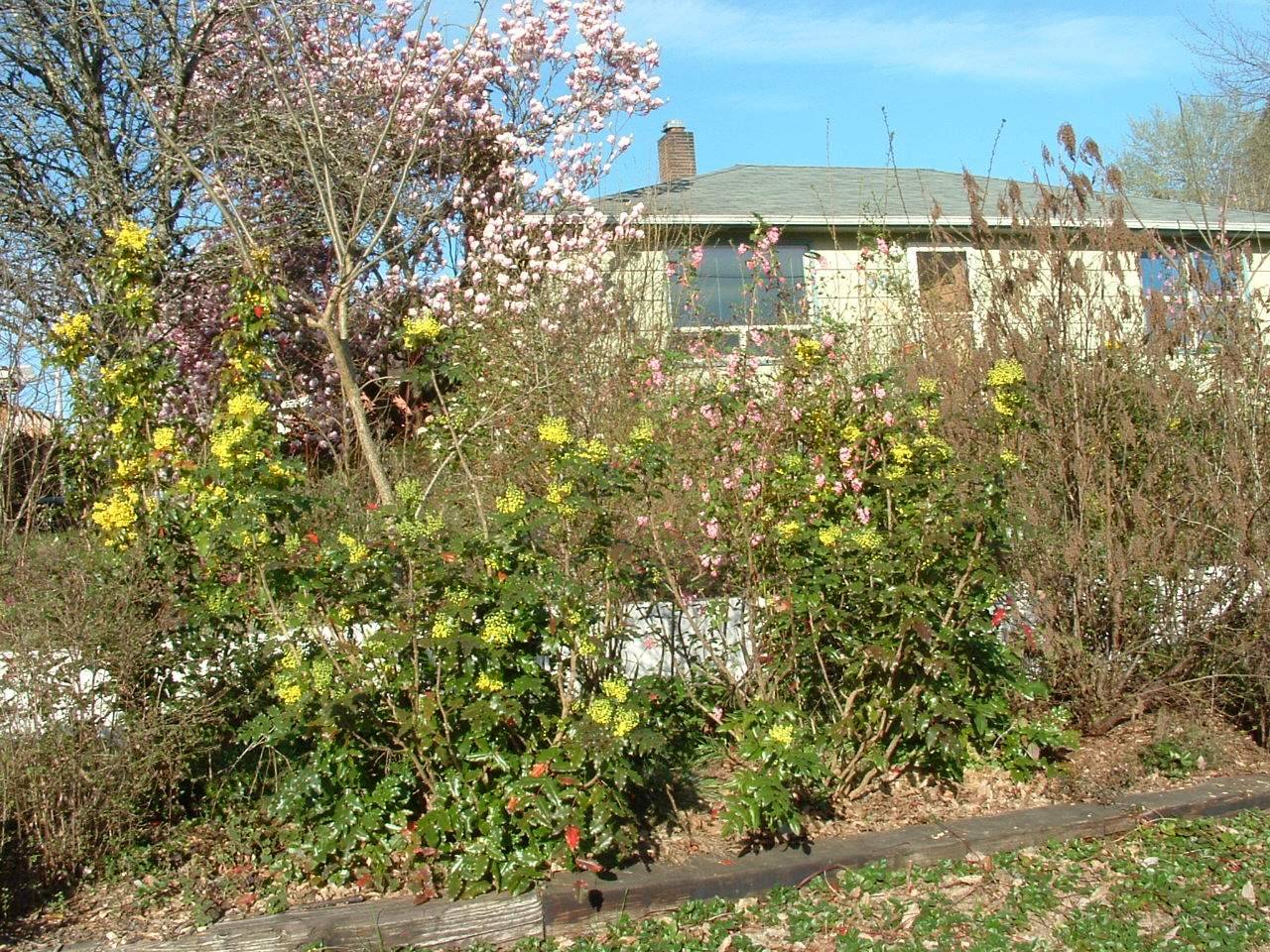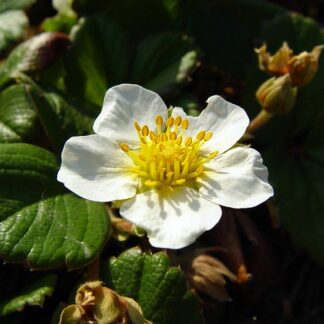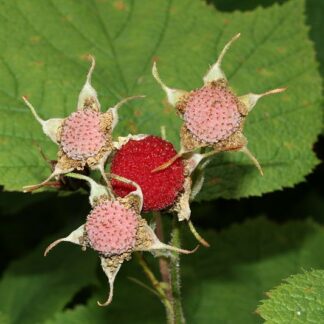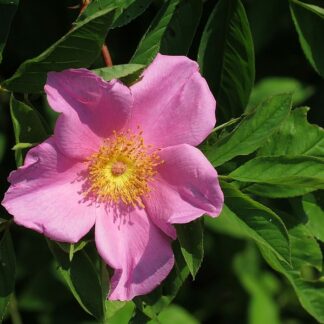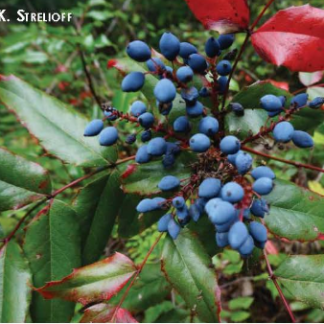Description
Sold in bundles of 10.
At a Glance: Erect, stiff-branched shrub with holly-like leaves and clusters of yellow flowers.
Height: 2.5 – 6.5 feet (0.8 meters – 2 meters).
Stems: Bark and stems are yellowish due to an alkaloid berberine.
Leaves: Leaves are alternately arranged, turn red/purple in winter, 5-11 leathery leaflets per leaf, leaflets are spiny toothed margins with a glossy topside and prominent red central veins; shape: oblong to elliptic; size: 8-24 cm (3-10 in) long.
Flowers: Many in erect clusters that are up to 20 cm (8 in) long, flower parts in sixes; primary color: bright yellow; size: about 0.5 cm (0.25 inches) long.
Flowering Period: April, May.
Fruits: Berries are 4-7 mm diameter, ovoid; dark blue with a white bloom; contain a few large seeds 4-5 mm long; flowers are born in an elongated cluster.
Uses: Tall Oregon Grape has been used as an ornamental species for decades. It is favored for its bright yellow flower clusters in spring, the dark purple berries in late summer, and the reddish green leaf color in fall and winter. The berries have been used (when absolutely ripe) for preserves.
Conservation Uses: Oregon Grape has numerous uses as a conservation species in the state. Its berries are a favored food of many species of birds and rodents, and the young stems and leaves can serve as forage (reluctantly) for deer and elk. It is well adapted to growing in drier, exposed sites, making it suitable for many restoration projects. It develops an extensive root system in time, making it a good soil stabilizer.
Helpful Tips: Oregon Grape can be slow to establish, and may require supplemental irrigation and weed control during the first growing season. As with any new planting, it should be watered during the dry season for the first 2-3 years. Plants should be spaced 4 feet apart. This plant can be difficult to start, especially during a dry spring. One must expect some mortality.
| Sun/Shade Tolerance | Hydrology | Elevation Range |
| More tolerant of open sites than Mahonia nervosa.
full sun > 80%
mostly sunny 60%-80%
partial sun and shade 40%- 60%
mostly shady 60%-80%
full shade > 80%
|
More tolerant of drier sites than Mahonia nervosa.
wet
moist
dry
|
Below 1200 meters elevation.
low elevation
mid elevation
sub-alpine
high elevation
|
| Soil Preferences | ||
| Tolerant of nutrient-poor, rocky soils. | ||
|
sandy soils
gravelly soils
clay soils
muddy soils
peaty soils
|
well drained soils
shallow soils
deep soils
acidic soils
basic soils
|
humic soils
nutrient rich soils
nutrient poor soils
mineral soils
organic soils
|
| Wildlife Value | |
|
Berries
Seeds
Nectar for hummingbirds
Nectar for butterflies
Host for insect larvae
Thickets and shelter
Thorny or protective cover
|
Birds: The berries are eaten by many birds including grouse, pheasants, robins, waxwings, juncos, sparrows, and towhees. Insects: Orchard mason bees and painted lady butterflies use the nectar. Mammals: Foxes, raccoons, and coyotes eat the berries. Deer and elk will occasionally browse the leaves and flowers. |
References:
Pojar, Jim, and Andy MacKinnon. Plants of the Pacific Northwest Coast: Washington, Oregon, British Columbia & Alaska. Revised ed. Redmond, Wash.: B.C. Ministry of Forests and Lone Pine Pub., 2004. Print.
“Sound Native Plants.” Sound Native Plants. Web. 31 Oct. 2014. www.soundnativeplants.com.

